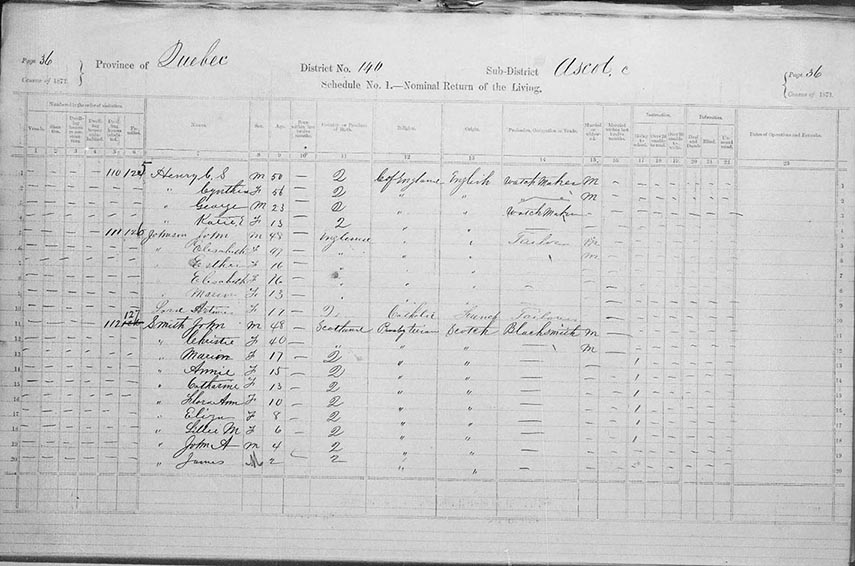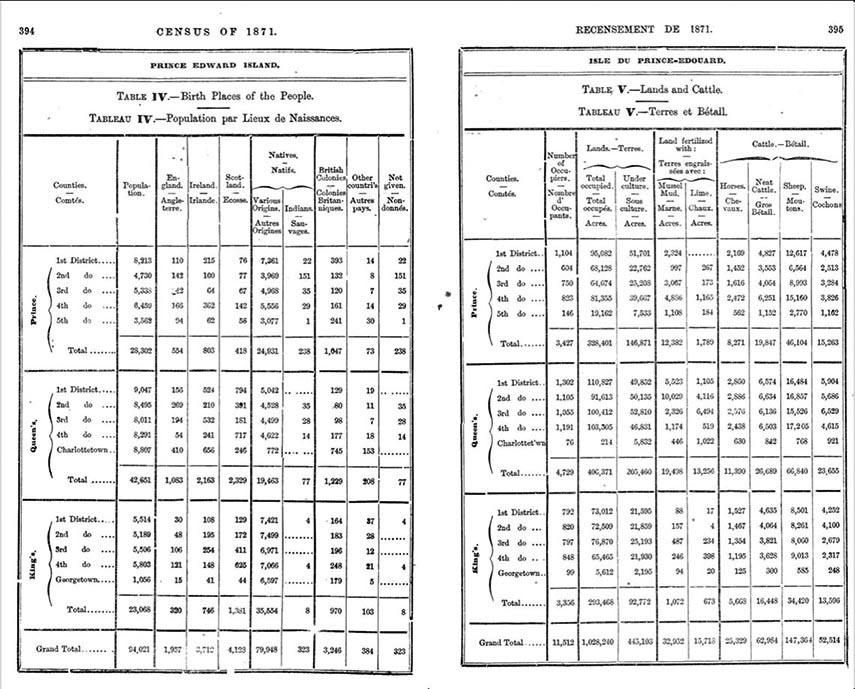Using the census to research your family history—Part 1: introduction to the census
The Canadian census is one of the best tools available for doing research into your family history. This is the first in a three-part blog post that explains the kinds of information that you can find in the census. Our second blog post will discuss tips and best practices for doing family history research through the census, and our third post will present a concrete example of what you can learn about your family history by using the census.
Manuscript vs. printed census
The first censuses came in two different forms: manuscript and print. The manuscript census contains detailed information about every individual in the country. This information was collected by official census takers, who are also called enumerators. Today, the manuscript census refers to the questionnaires that you fill out and send back to Statistics Canada. But before 1971, census information was actually collected by enumerators who went from door to door to interview everyone.

Once each enumerator had collected the information for everyone in their area, they would send these answers back to Statistics Canada (formerly under the jurisdiction of the Department of Agriculture). After the manuscript census was received, it was studied for several months or years. Once this was finished, the results would be shared publicly in an official report. This is what we call the printed census.

To do family history research, you should use the manuscript census. This is because the manuscript census collects information about individual people. In contrast, the printed census contains more general information and statistics.
Available censuses
There have been hundreds of censuses in this land that we now call Canada over the last 400 years. The first official census in Canadian history was taken by the governor of New France, Jean Talon, in 1666. From 1666 to 1870, different governments would take a census whenever they felt they needed to do so. That means that for some areas, there were censuses every year, while in other regions decades could go by between censuses. In this same period, 98 censuses were conducted.
Everything changed in 1871. This was the first national census, since it was the first census taken in Canada after confederation. The earliest national censuses were taken every ten years until 1951 (except for the prairie provinces censuses, which happened more frequently). As of 1951, the Census of Population is taken every five years.
Since the information collected by the census is private, manuscript censuses are kept confidential for 92 years. It is only after that point that they're accessible for research. The most recent manuscript census to be released is from 1926.
What you can learn from the census
We can learn many things from the census. Each census is different—the questions asked may change from census to census and so do the potential responses to each question. These fluctuations reflect not only how Canadian society has transformed but also what the government wants to learn about its population. For example, censuses of the 17th and 18th centuries were often concerned with taxation, so questions were focused on property. Others were concerned with assessing military strength, being focused on enumerating soldiers and officers. More recently, the funding of government programs has become more of a concern, so the census was focused on better understanding the characteristics of the Canadian population.
In general, you can expect that most (but not all) censuses after 1871 contain the following information:
- age
- sex
- marital status
- country or province of birth
- religious denomination (since 1951, questions about religion are asked only every 10 years)
- ethnic origin
- occupation
- education.
It is important to note that the earliest censuses might be missing data. In the past, hazardous weather and even natural disasters sometimes made it impossible for enumerators to gain access to the information they needed. For example, the 1861 Census was conducted in January, so poor weather prevented information from being collected in several areas. In other cases, original records were lost to fire or suffered water damage.
In our next post Using the census to research your family history—Part 2: tips and best practices, we will suggest tips and best practices for using the census to research your family history.
- Date modified: